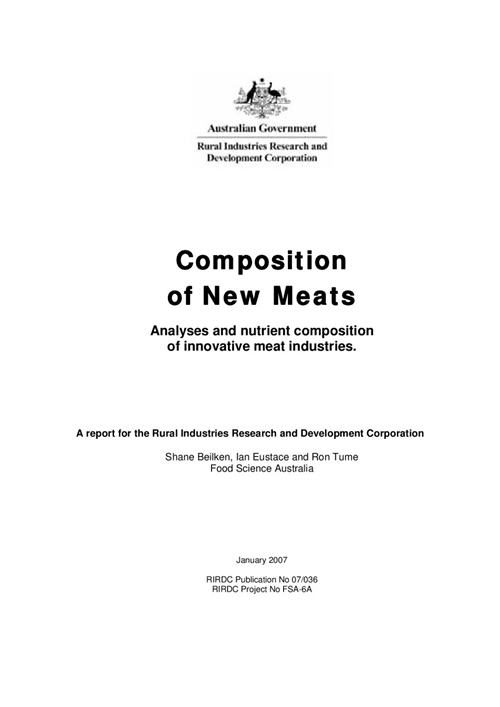Accelerating wattle seed production for the Australian native food industry
The Australian wattle seed (Acacia spp.) industry is poised for significant growth after the establishment of several commercial orchards in recent years. In 2020, about...

59 pages
Published: 29 Jan 2007
Author(s): Beilken, S, Eustace, I, R Tume - Food Science Austra
Download report PDF
DownloadPurchase a hard copy - AUD $45.00
As well as ‘traditional’ meats such as beef and lamb, consumers are increasingly choosing ‘new’ meats such as buffalo, camel, crocodile, ostrich, emu, farmed rabbit and squab. This report presents for the first time, a snapshot of nutritional information of the major ‘new meat’ species being produced and marketed in Australia. The findings show that all meats are a good source of protein. Most tested very low in fat, with many cuts from different species being less than 3%. Similarly, the cholesterol contents of most meats was quite low. Overall this work demonstrates that these meats are nutritionally acceptable, being low fat and high in protein and contribute to the intake of polyunsaturated fatty acids.
Information that complies with requirements of the FSANZ Food Standards Code contained in this report is frequently sought for Nutrition Information Panels. The information for eight ‘new’ types of meat including buffalo, camel, crocodile, ostrich, emu, farmed rabbit and squab can be used by people when they are preparing the information necessary for the Nutrition Information Panels on Product Labels (Standard 1.2.8 – Nutrition Information Requirements of the Code).
In this study commercially representative samples of meat from the nominated species were collected and analysed using standard procedures. The results are reported in a format that is compatible with the Food Standards Australia New Zealand (FSANZ) nutrient database.